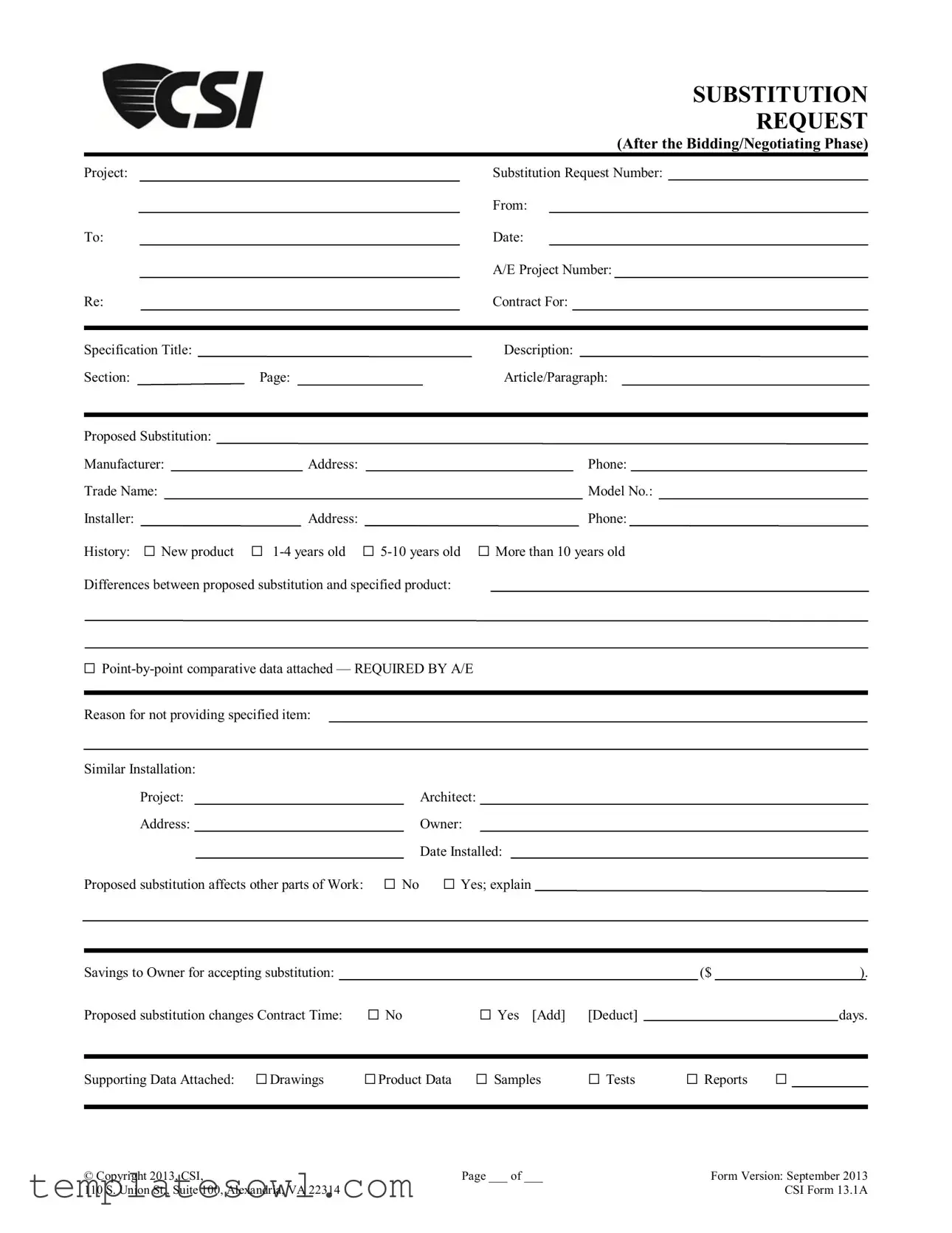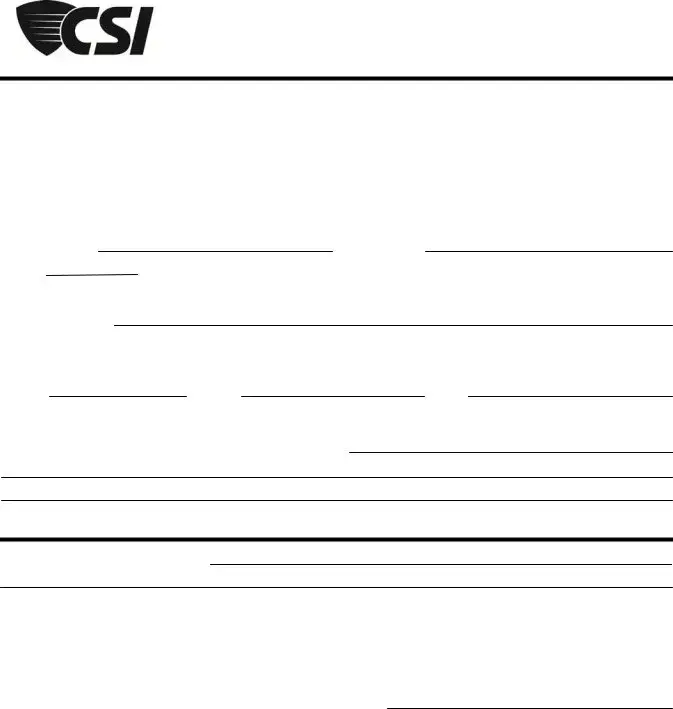What is the purpose of the Csi 13 1A form?
The Csi 13 1A form is used to request a substitution for products specified in a construction contract after the bidding or negotiating phase has concluded. This form is essential for ensuring that any changes to the originally specified materials or equipment can be carefully reviewed and approved by the architect or engineer (A/E) overseeing the project.
What information is required on the Csi 13 1A form?
The form requires comprehensive details, including the project name, substitution request number, and specific contract information. It also asks for a description of the proposed substitution, along with details about the manufacturer, model number, and the installer. Additionally, information on the age of the proposed product, a point-by-point comparison with the specified item, and reasons for the substitution must be provided.
Why might a contractor want to request a substitution?
Contractors may request substitutions for various reasons. These can include the availability of new or more effective products, cost savings for the owner, or the desire to use a product that has proven superior performance in previous projects. Sometimes, logistical issues or supplier constraints also lead to the need for a substitution.
What happens if the proposed substitution affects other parts of the work?
If the proposed substitution impacts other areas of the project, this must be clearly noted on the form. The contractor should provide an explanation of how the substitution will affect the overall work. This information is crucial for the A/E to fully understand the implications and to assess the request thoroughly.
How does one demonstrate the relationship between the proposed substitution and the specified product?
A detailed point-by-point comparative data must be attached to illustrate the differences between the proposed substitution and the specified item. This comparison is required by the architect or engineer to evaluate if the new product meets the same or better standards than the original specification.
What is the significance of providing supporting data?
Supporting data, which may include drawings, product data, samples, tests, or reports, is vital because it backs up the request for substitution. This documentation helps the A/E to assess the validity and appropriateness of the proposed product, ensuring it will meet project requirements.
Are there any implications for contract time when making a substitution request?
Yes, a substitution might impact the overall contract time. The contractor needs to indicate if the proposed substitution will add or deduct days from the project timeline. This information is important for project management and planning, as it helps all parties understand the possible effects on the completion date.

